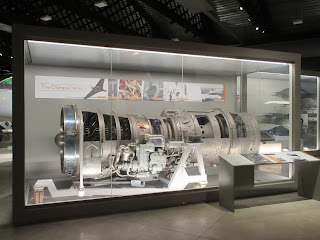Oh well so much for the football. I actually watched the game this time. I don't tend to watch much football because it's a pit of dishonesty and the players are by and large, the opposite of good sportsmen playing totally without honour.
But it's been a good world cup so far with some unpredictable results. Predictability is boring.
And I never predicted what I'd see at the Bristol Aerospace museum last week ...
Although I did know that the lovely lady of the skies, Concorde would be there. Beautiful aircraft, hopefully we'll see something similar in the future. In this case, form fitted function and function led to a design which was one of the most gorgeous, iconic shapes there has ever been for an aircraft. A technological marvel too, overcoming so many obstacles and making a success of the concept.
But Bristol Aerospace wasn't just about the Pretty Plane. (Did you like the segway from World Cup to Fun Stuff by the way ? :-D ). No. I was hunting the slide rules. Most of what you're about to see was designed before the computer age. Minimal technology, just rulers, protractors, skilled draftsmen and .... (hushed tone) .... slide rules. The calculators of most of the 20th century and before !
The exhibition opens with a pair of biplanes, which look in so good a condition they could probably still fly. And land. Landing is important, especially landing without crashing. Above is a Bristol Fighter and below is a Scout Replica :
These planes were designed around 100 years ago. Not just planes :
If my memory's good, that's a Hercules 9 cylinder rotary engine. Crankshaft is in the middle and drives the prop, probably through a reduction gear. There's a display on how they used to build the propellers too.
And the tools used to design them. Still haven't found that slide rule yet.
A Centaurus rotary combustion engine. This one weaves another bank of cylinders in around the crankshaft.
And the Bristol Beaufighter cockpit that would be in the middle of those engines. (Until the Merlin arrived!) Curious to see what conditions our airmen would have fought their wars in.
Early twin rotor transport helicopter, a forerunner of the Chinook. I believe the front end had a Bristol postcode and the back end had a Bath postcode. This was looooong!
No computers in that airliner cockpit ... Oh - click for bigger by the way !
They didn't just have planes and helicopters there ... This is the Bloodhound missile. Kerbals would be proud of it. More boosters ! Not enough ? Add even more boosters ! This was our long range air defence missile last century.
And more missiles :
From left to right that's :
Rapier - British Army short to medium range surface to air missile;
Sea Wolf in a canister - Royal Navy short range surface to air missile;
Upper layer - Sea Wolf out of its canister. Thought it would be bigger !
Upper right - Sea Skua, a small scale Naval antiship missile.
Lower right - Sea Dart, a medium range air defence missile.
Good stuff !
As was this, the Olympus gas turbine engine which powered planes, ships probably trains too. Bit big for automobiles and I think it got retired in favour of engines like the Trent because it's thin .... the wide body diameter of modern gas turbines is due to a bypass fan which is of much higher diameter than the rest of the engine, which leads to the much quieter operation demanded by pretty much all operators and airports now.
An old Harrier, we believe Sea Harrier (I should have looked more closely !) because the nose is big. As a rule - Sea Harrier : has a big nose hiding a big radar that's used to do targeting for missiles. Harrier GR series - small nose without much of a radar in it. Sadly the Harriers became too expensive to keep going so we had to give them up. Looking forward to good stuff from the F-35 though.
There we go. The museum is great but the main even is definitely the retired Concorde.
There's a quite informative and interesting set of movies played on the skin of both the front fuselage and :
Showing the innovation in those engine systems that allowed effective and efficient operation across the whole speed range of the aircraft.
First civilian fly by wire cockpit managing all of the technology. They had a few standalone displays off the aircraft, showing how much the pilots and crew would need to manage to engage safe and efficient flight.
More cramped than I thought it would be .... Both my elbows were touching the sides here.
All in all, I had a great excuse to spend my Friday afternoon cooldown time hunting a Gromit and checking out an exhibition of aerospace in Filton tracking its history over the last 100 years.
I would thoroughly recommend giving it a visit. Oh and until September, it will have my excuse to visit :
Gromjet !
PS Never did find the slide rules.




















No comments:
Post a Comment
So much for anonymous commenting ... If you would like to leave a message and don't have a suitable account, there's an email address in my profile.